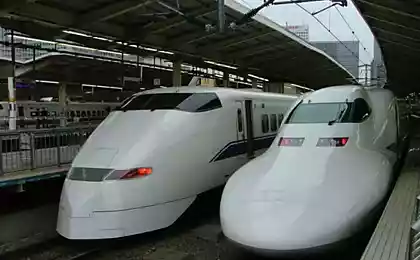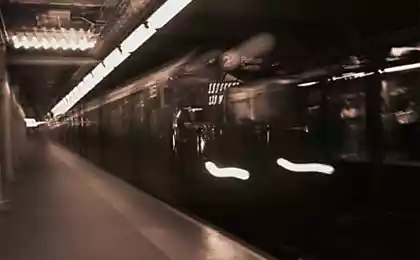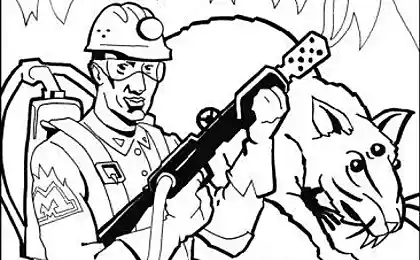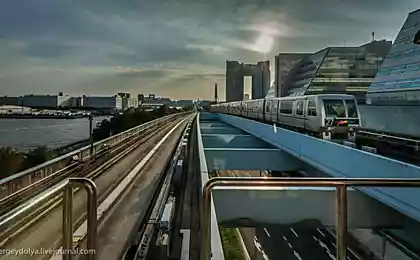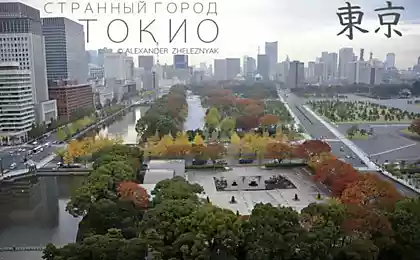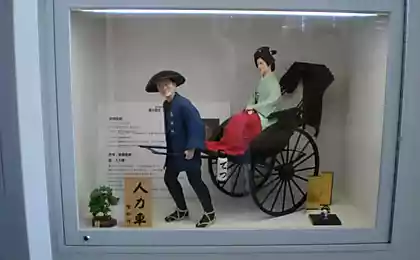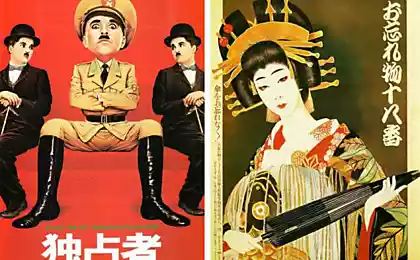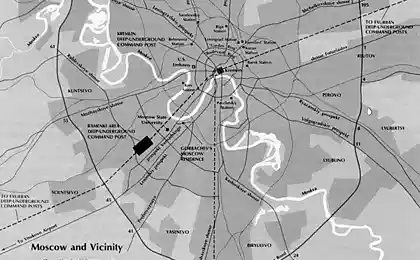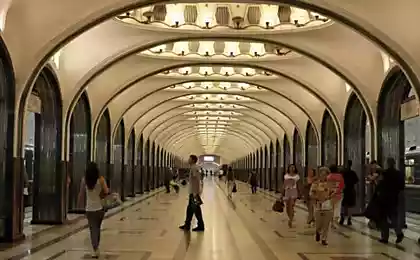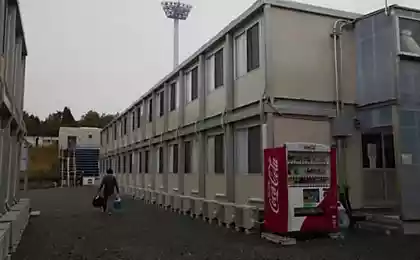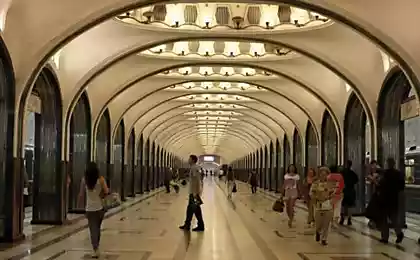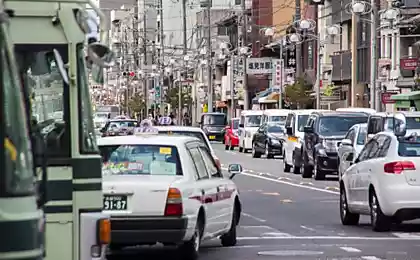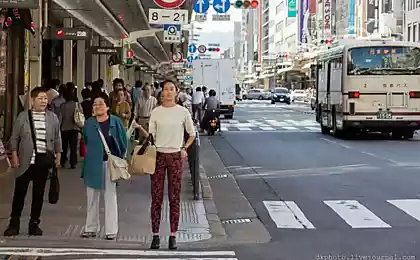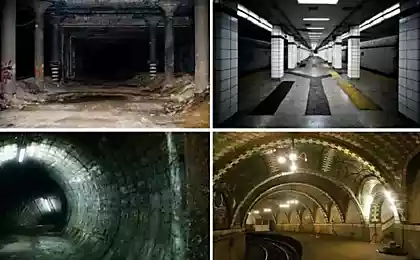1092
Bright Side of the Tokyo subway
There is a rumor that the Tokyo subway awful lot and it is easy to get confused.
Of course, if you look at the scheme of lines it may seem so, but in reality everything is much easier
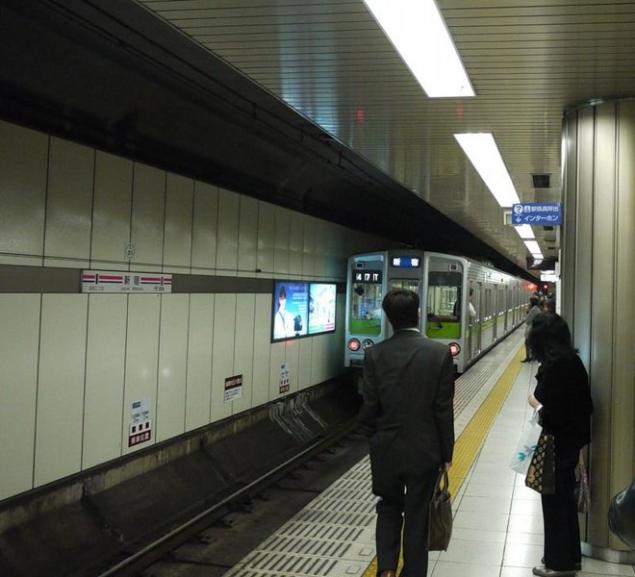
Construction of the metro began in 1920 and now it consists of 13 lines. The main feature of the Tokyo subway by comparison with the Novosibirsk and Moscow is that on most of the lines are not used contact rail, but the contact wire on trains. Actually, the train is the train - they begin their movement on the surface away from the center of Tokyo, at the entrances to the tunnels dive, pass under the city, come to the surface with the "other side" and go on. In the photo the contact wire is clearly visible.
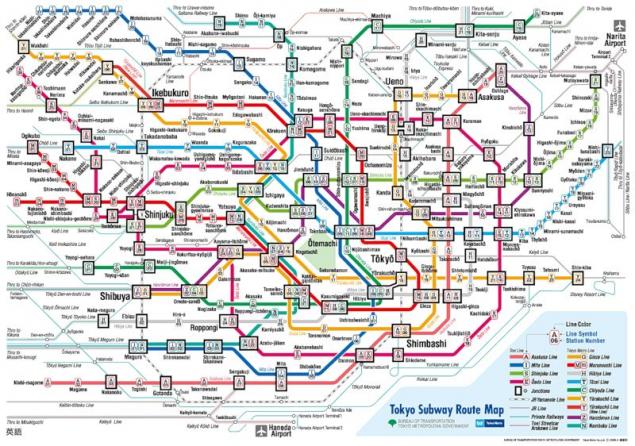
"Real" subway line is also available, gauge them is different.
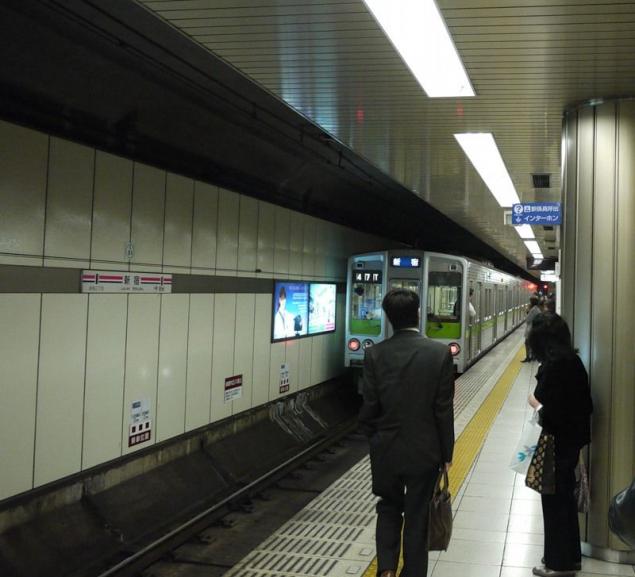
Each line has its own color schemes as well as expressed in the color compositions. These colors are used in multiple nodes direct - colored circle, in the letter lines and station number indicating the distance in meters. Values greater than 800 meters in some places, but due to the large number of indexes, and a huge number of free circuits lines the opportunity to get lost in the Tokyo subway is difficult.
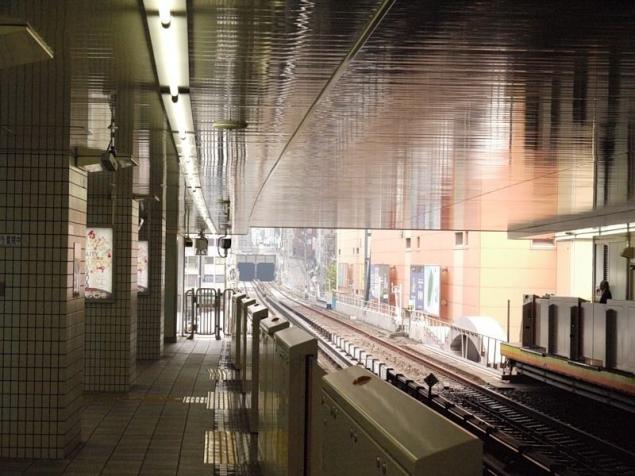
But if you talk about the numerous entrances and exits at the station, there is already quite possible to get lost. Each station has a dozen outlets numbered as A1, A2, C3 ... ... They are built in a variety of building - to get out of the subway to the supermarket it habitual. Sometimes these transitions stretch for hundreds of meters, are placed inside the numerous shopping arcades - shops, catering. By the way, vending machines and kiosks are located not only in the transitions, but also on the platforms themselves, although not as frequently. Tokyo Station is not especially transport facilities, is a small town where you can live without leaving the surface. The integration of the various transport systems in a network, here's what the Japanese succeeded fully. Metro is not perceived as something apart. In addition to the usual inputs, at the station are lifts for the disabled.

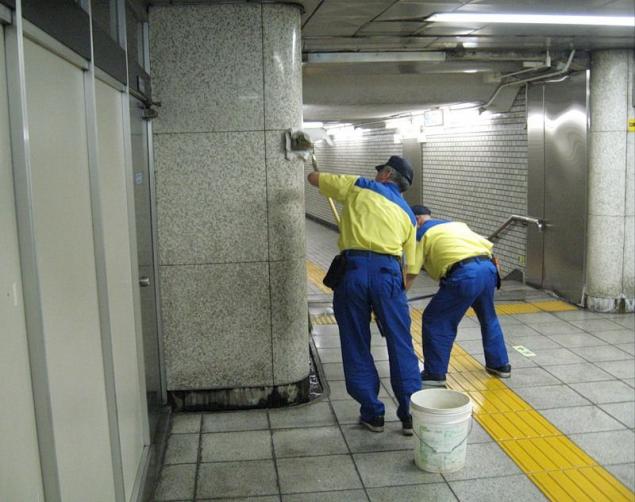
Another interesting feature is the shape of the station platform - a lot of them curved. In Russia, the current standard for the minimum turning radius of 500 meters of tunnel in Moscow found 400 abroad as this value is much smaller - 75 meters in Berlin, Tokyo, too little.
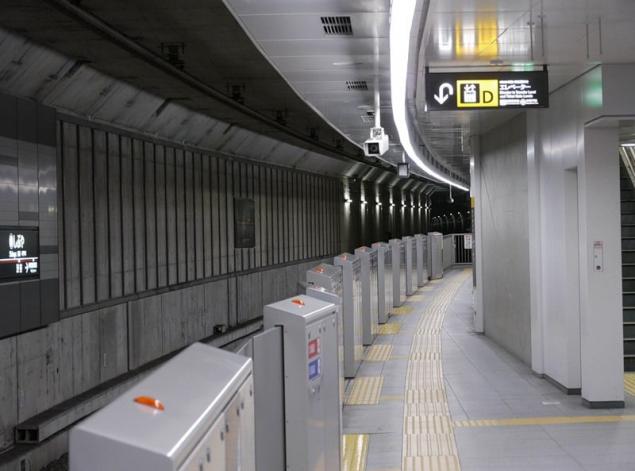
The tunnels themselves are burning lamp that can be seen in the above given even photos.

Its depth varies, generally closer to the flock. Because of the deep I have seen only one "Korakuen" four eksalatoryh march. As for the architectural appearance of the station, then in comparison with Moscow, Tashkent or Novosibirsk, Tokyo nervously smokes on the sidelines. Low ceilings, monotonous plain tiled walls - after the Soviet underground palaces quite impressive.
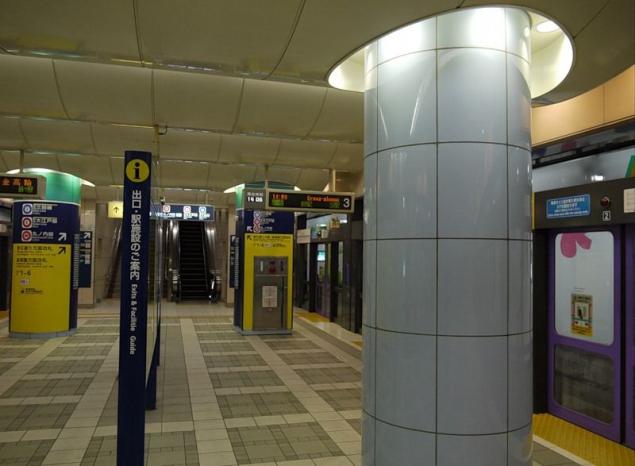
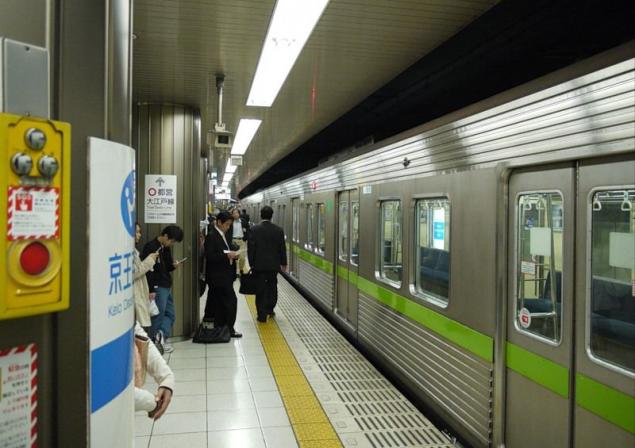
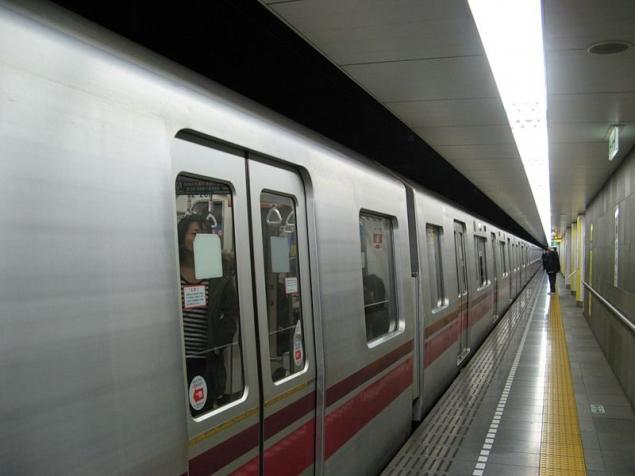
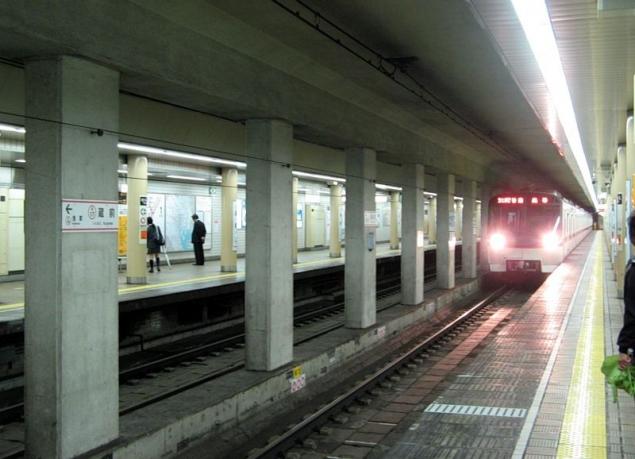
Stub-way otsoyniki in the center of one of the stations
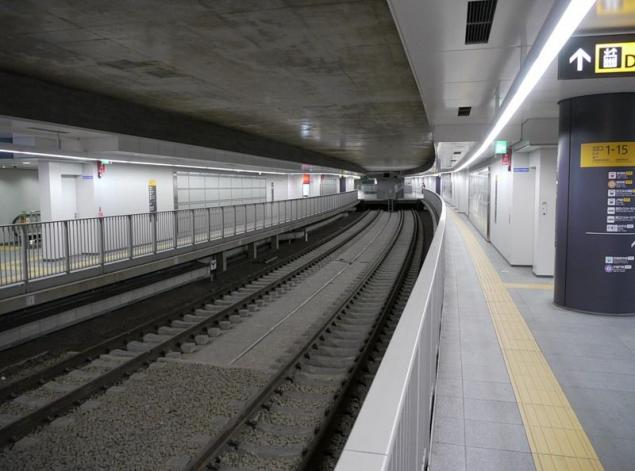
So as platforms installed drinking fountains, and numerous transitions free toilets. When we designed Novosibirsk subway, so the toilets were provided, but later VA Titov of Novosibmetroproekta has made the abolition of the decision. (And, indeed, well considering the Russian-Soviet disgusting). In Tokyo, they purest, as if in an expensive hotel.
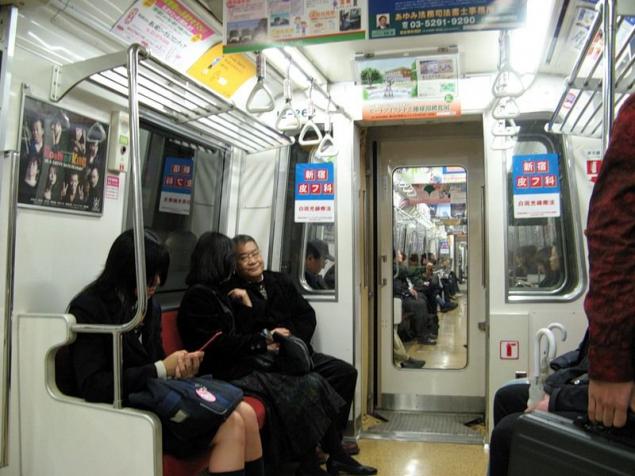

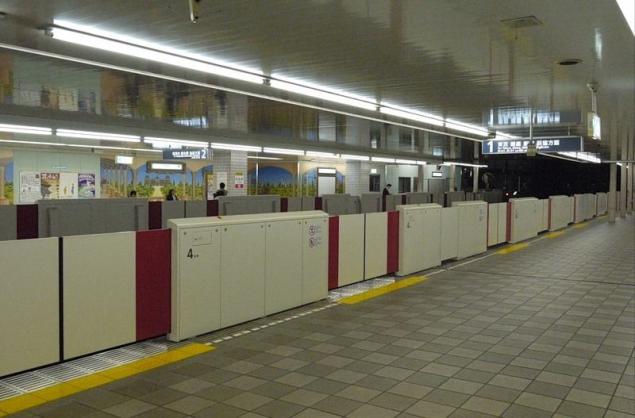
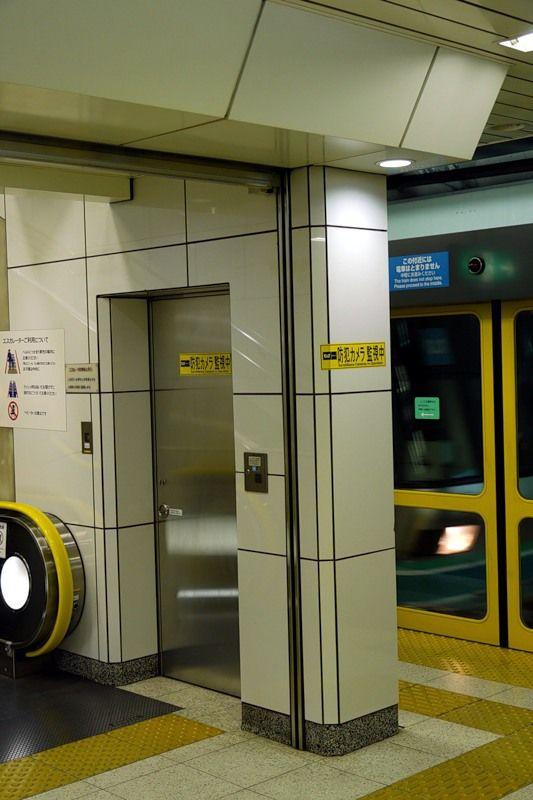
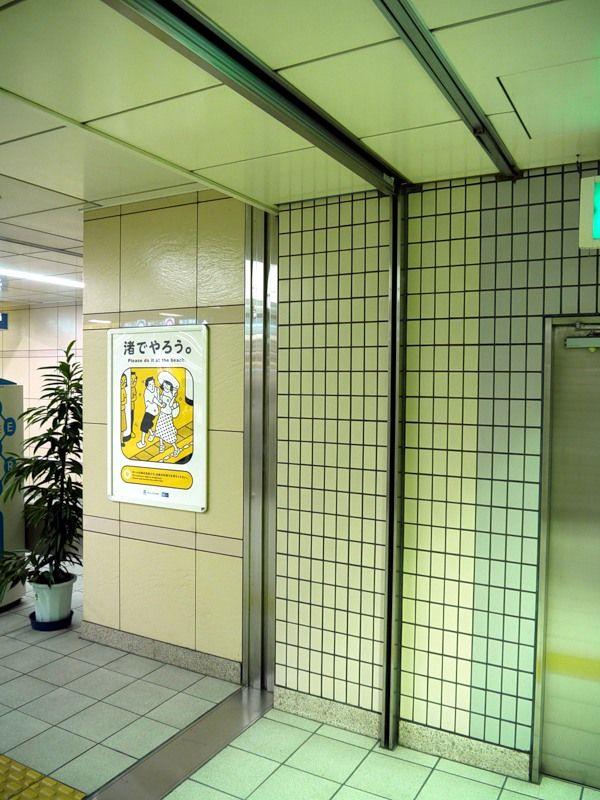
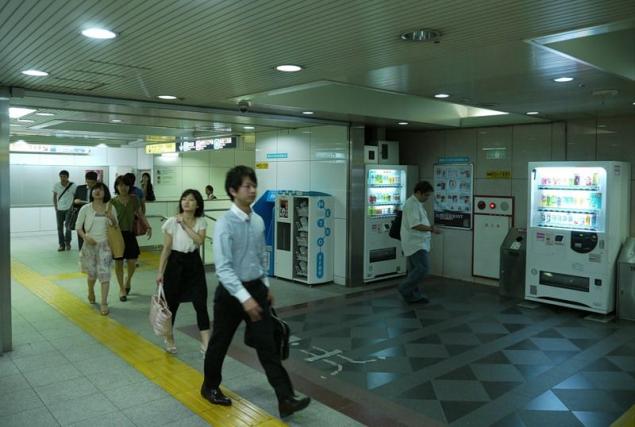
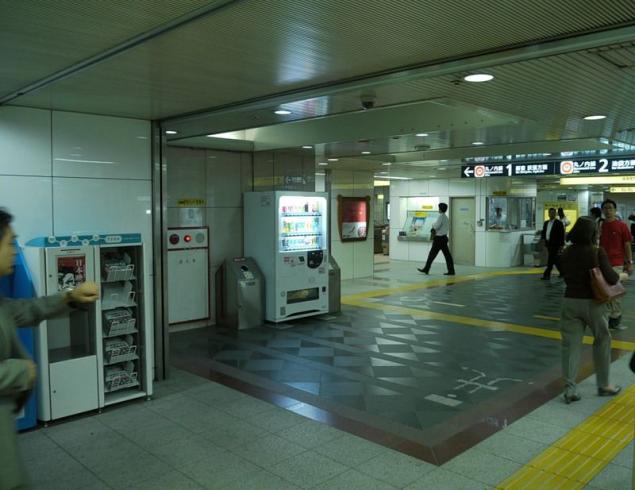
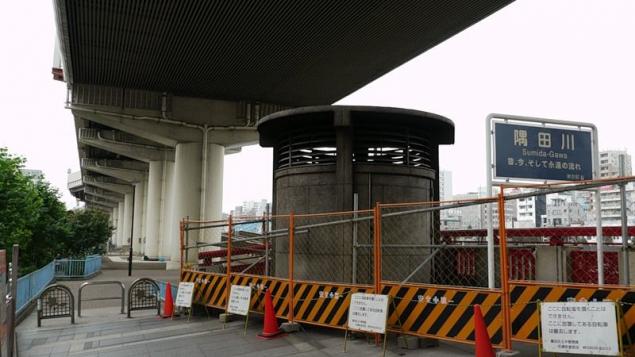
via source
Of course, if you look at the scheme of lines it may seem so, but in reality everything is much easier

Construction of the metro began in 1920 and now it consists of 13 lines. The main feature of the Tokyo subway by comparison with the Novosibirsk and Moscow is that on most of the lines are not used contact rail, but the contact wire on trains. Actually, the train is the train - they begin their movement on the surface away from the center of Tokyo, at the entrances to the tunnels dive, pass under the city, come to the surface with the "other side" and go on. In the photo the contact wire is clearly visible.

"Real" subway line is also available, gauge them is different.

Each line has its own color schemes as well as expressed in the color compositions. These colors are used in multiple nodes direct - colored circle, in the letter lines and station number indicating the distance in meters. Values greater than 800 meters in some places, but due to the large number of indexes, and a huge number of free circuits lines the opportunity to get lost in the Tokyo subway is difficult.

But if you talk about the numerous entrances and exits at the station, there is already quite possible to get lost. Each station has a dozen outlets numbered as A1, A2, C3 ... ... They are built in a variety of building - to get out of the subway to the supermarket it habitual. Sometimes these transitions stretch for hundreds of meters, are placed inside the numerous shopping arcades - shops, catering. By the way, vending machines and kiosks are located not only in the transitions, but also on the platforms themselves, although not as frequently. Tokyo Station is not especially transport facilities, is a small town where you can live without leaving the surface. The integration of the various transport systems in a network, here's what the Japanese succeeded fully. Metro is not perceived as something apart. In addition to the usual inputs, at the station are lifts for the disabled.


Another interesting feature is the shape of the station platform - a lot of them curved. In Russia, the current standard for the minimum turning radius of 500 meters of tunnel in Moscow found 400 abroad as this value is much smaller - 75 meters in Berlin, Tokyo, too little.

The tunnels themselves are burning lamp that can be seen in the above given even photos.

Its depth varies, generally closer to the flock. Because of the deep I have seen only one "Korakuen" four eksalatoryh march. As for the architectural appearance of the station, then in comparison with Moscow, Tashkent or Novosibirsk, Tokyo nervously smokes on the sidelines. Low ceilings, monotonous plain tiled walls - after the Soviet underground palaces quite impressive.




Stub-way otsoyniki in the center of one of the stations

So as platforms installed drinking fountains, and numerous transitions free toilets. When we designed Novosibirsk subway, so the toilets were provided, but later VA Titov of Novosibmetroproekta has made the abolition of the decision. (And, indeed, well considering the Russian-Soviet disgusting). In Tokyo, they purest, as if in an expensive hotel.








via source
